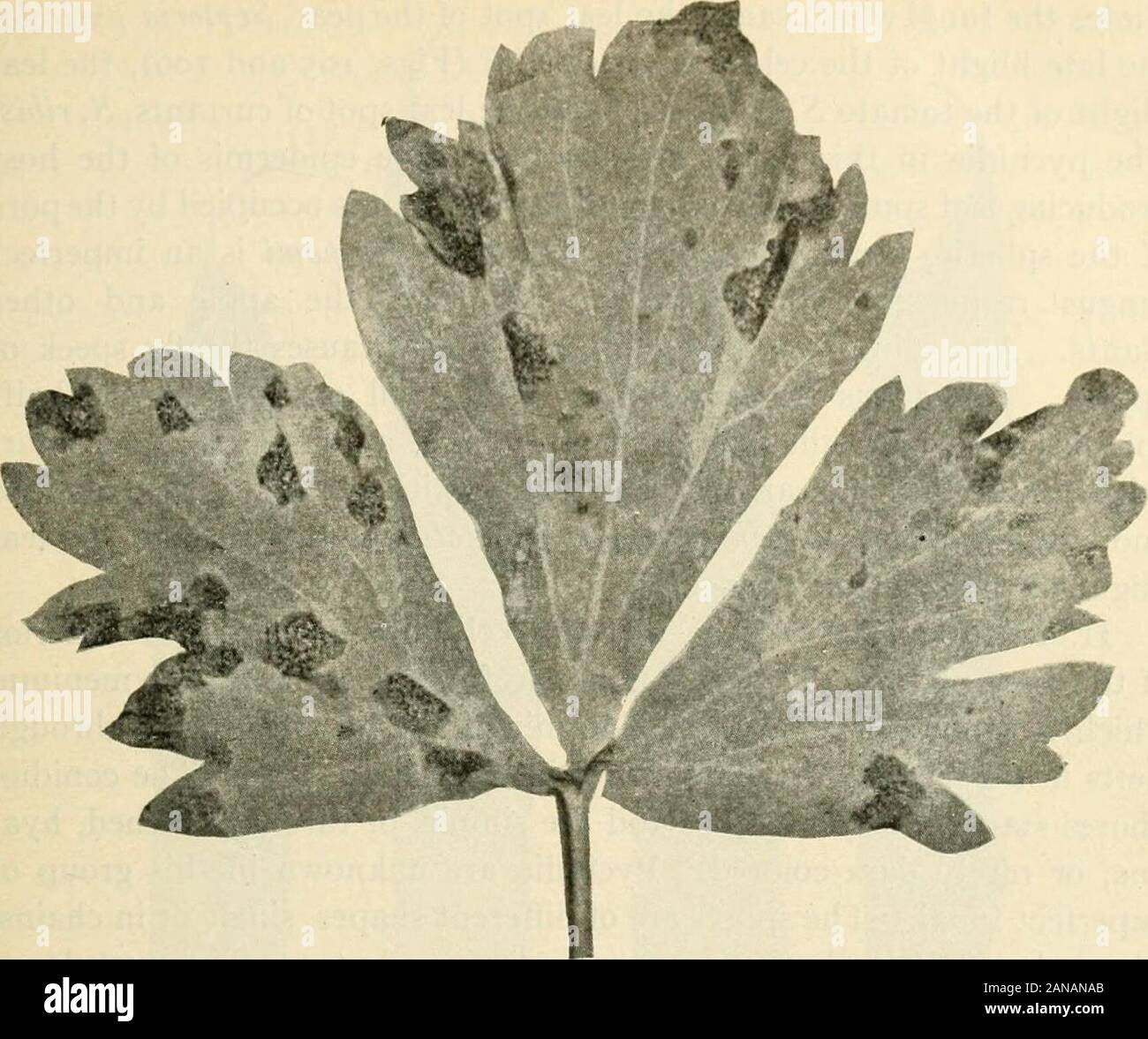A text-book of mycology and plant pathology . Fig. 104.— Microscopic characters of apple blotch fungus {Phylloslicla solitaria).I,vertical section of pycnidium showing pycnospores; 2, 3, 4, 5, mature pycnospores;6, 7, 8, germinating spores; 9, mycelium. {After Scott, W M.. and Rarer, J. B., Bull.144, U. S. Bureau of Plant Industry, pi. in, March 16, 1909.) like the damping-off fungus, attacking seedling egg plants near the sur-face of the ground. The most destructive fungus of the genus Sphmrop-sis is S. malorum which causes the decay of apples, quinces and pearsand attacks the stem of the app

Image details
Contributor:
The Reading Room / Alamy Stock PhotoImage ID:
2ANANABFile size:
7.2 MB (341 KB Compressed download)Releases:
Model - no | Property - noDo I need a release?Dimensions:
1729 x 1446 px | 29.3 x 24.5 cm | 11.5 x 9.6 inches | 150dpiMore information:
This image is a public domain image, which means either that copyright has expired in the image or the copyright holder has waived their copyright. Alamy charges you a fee for access to the high resolution copy of the image.
This image could have imperfections as it’s either historical or reportage.
A text-book of mycology and plant pathology . Fig. 104.— Microscopic characters of apple blotch fungus {Phylloslicla solitaria).I, vertical section of pycnidium showing pycnospores; 2, 3, 4, 5, mature pycnospores;6, 7, 8, germinating spores; 9, mycelium. {After Scott, W M.. and Rarer, J. B., Bull.144, U. S. Bureau of Plant Industry, pi. in, March 16, 1909.) like the damping-off fungus, attacking seedling egg plants near the sur-face of the ground. The most destructive fungus of the genus Sphmrop-sis is S. malorum which causes the decay of apples, quinces and pearsand attacks the stem of the apple tree producing characteristic cankers.The genus includes about 180 species. The 150 species of the genusConiothyrium are widely spread geographically. The blight of rasp-berry canes is due to Coniothyrium Fuckelii, which has only recentlycome into prominence in the United States. The genus Septoria in- FUNGI IMPERrECTI (dEUTEROMYCETES) 263. Fig. 105.—Septoria leaf spot disease of celery, or celery blight. {After Coons, G. N.and Levin, Ezra, Spec. Bull. 77, Mich. Agric. Coll. Exper. Stat., March. 1916. SPORES,